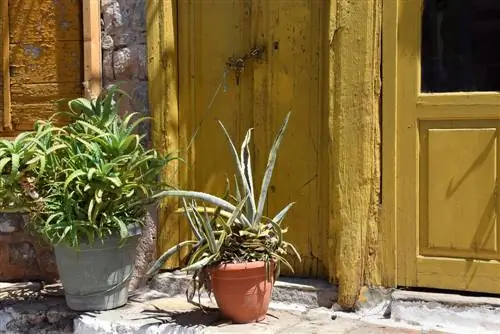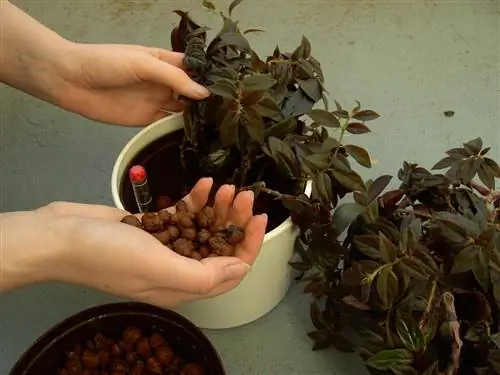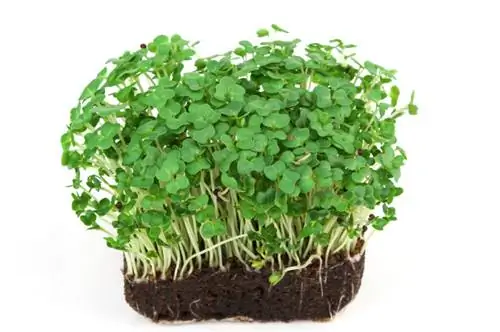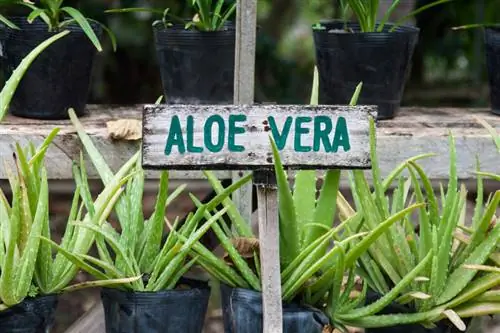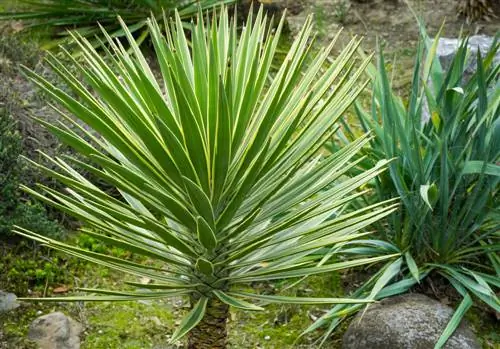- Author admin [email protected].
- Public 2023-12-16 16:46.
- Last modified 2025-01-23 11:22.
Due to their very similar appearance, many people find it difficult to distinguish between agave and aloe vera. In this article you will find out all the important information you need to reliably distinguish between the two species and care for them appropriately.

What is the difference between agave and aloe vera?
Agave and aloe vera differ primarily in their size, leaf structure and flowering cycles. Agaves are larger, have sharp spines on the edges of the leaves and only bloom once in their life. Aloe Vera, on the other hand, has soft, jagged leaf edges, fleshy leaves and can bloom every year.
What are the typical differences between agave and aloe vera?
Agaves tend to be larger and have sharp spines on the edges of their leaves. The leaves of aloe vera, on the other hand, are jagged, but not sharp. Furthermore, agave leaves are fibrous inside, while aloe vera leaves are thick, fleshy and filled with a transparent gel. In addition, the two species have different origins and life cycles. Agave and aloe vera are only quite similar in terms of their care and location needs.
How do the two species differ in appearance?
All types of agaves form a rosette of succulent leaves that have sharp thorns and a sharp central edge. Depending on the variety, agaves also have green, blue-green, gray-green, variegated or cream, yellow or gold leaf colors.
Like agave, aloe vera forms a rosette of thick, fleshy, green to greenish-blue leaves. The edges of the leaves are lined with small, white teeth. Unlike agave leaves, which are very fibrous on the inside, aloe vera leaves are fleshy. In addition, the plants are not thorny like agaves.
Do agave and aloe vera differ in their uses?
Both agave and aloe vera have been used in diverse ways in different cultures for centuries. Some types of agave are edible. These agaves have four main edible parts: the flowers, the foliage, the basal rosettes or stems, and the sap, which in Spanish is called augamiel, meaning honey water. The ancient indigenous people of the American Southwest used agave as an important source of food.
Aloe vera has been promoted as a medicinal and cosmetic plant for thousands of years, but can be poisonous if taken internally and affect the digestive system.
Are both species suitable as houseplants?
Agave and aloe vera are often used as ornamental plants. Both can be grown quite well outdoors in frost-free climates. In addition, smaller varieties of both plants are suitable as houseplants.
As a houseplant, agave grows slower than aloe vera, meaning you can keep the plants smaller and more manageable for longer periods of time. Aloe vera also works well as a houseplant, but both types require a lot of sun and warmth to thrive indoors.
How do agave and aloe vera differ in their flowers?
The agave is not called the “plant of the century” for nothing. The different species can live for many decades and only bloom once in their life. The mother plant then dies. Aloe vera, on the other hand, can bloom every year, but the blooms are rarely seen when grown indoors.
Tip
Don't keep both plants too moist
If you are cultivating agave and aloe vera in a plant pot, use a well-drained potting soil (€12.00 on Amazon) or a cactus mix. Do not plant them in soil that is prone to waterlogging and ensure good drainage, otherwise your plants will develop root rot and die.

